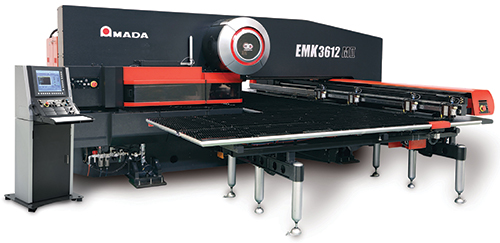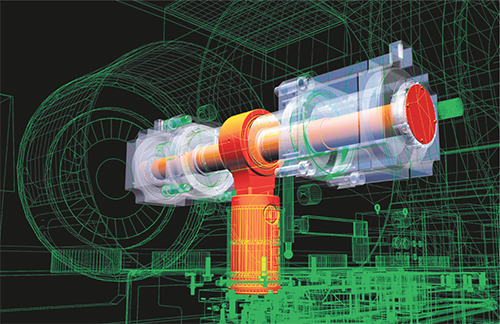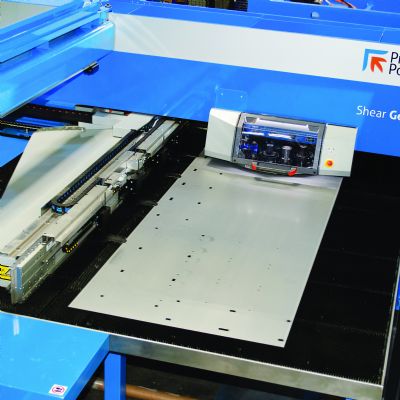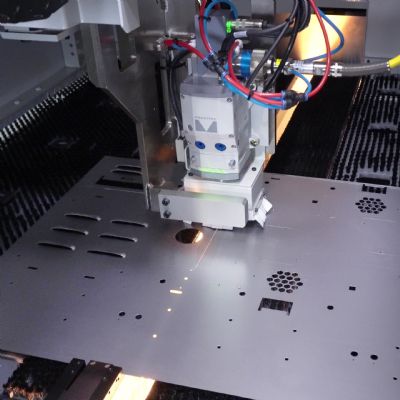Maintain, Maintain, Maintain
Maintenance for punch presses begins with common sense. Keep up on standard periodic maintenance.“That doesn’t always happen,” says Brady. “Some users don’t even think about basic maintenance, like people who buy a car and don’t change the oil.”
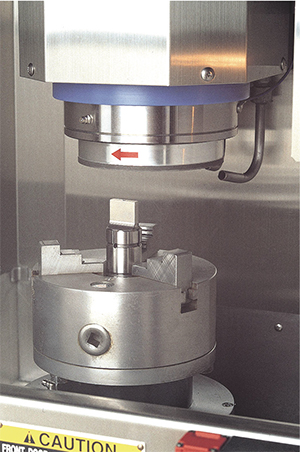 |
| A tool undergoes sharpening in a machine designed specifically for turret-press tooling. Sharp tools will last longer (as a tool wears, the wear rate will speed up), protect against machine damage, and help ensure part quality and repeatability, so check for tool wear regularly after a predetermined number of hits. The latest turret punch presses help by providing tool hit counts. |
Just see how long your vehicle lasts without an oil change.
Many machines feature maintenance-schedule warning systems that automatically alert operators.“They’ll warn for monthly lubrication checks, for example,” says Brady, “These warnings only work if you turn them on, so make sure that all automatic reminders are active.”
Critical is tool maintenance. Properly maintained tooling not only optimizes productivity and part quality, but also affects machine performance.
“For example, we have air-blow oil-mist tooling, which is self-lubricating,” Brady explains. “That greatly extends tool life. Whether using this or other tooling, the point is to be pro-active with tool lubrication.”Also key is keeping punches sharpened. Machines today can track tooling hit counts, helping users monitor and address tool wear.
“When a tool becomes worn, wear speeds up,” says Brady, citing a little-recognized fact. “At that point, tool wear accelerates almost exponentially.”
Combination turret-press/laser machines require additional maintenance; namely, keeping nozzles and lenses clean. Brady recommends checking them daily, as dirt and dust will negatively impact cut quality and speed. Lasers in combo machines also create dust when working with aluminum.
When using a combo machine, Brady recommends prepunching the laser starting points. Doing so not only saves wear on the laser lenses but also cuts down on dust.
CO2 lasers also require periodic checking and changing of chiller water and turbo-blower oil.
Production Efficiency Also Extends Machine Life, Shortens ROI
Evolving CNC punch presses not only push the technology envelope to deliver improved performance, they can do so indefinitely if they get some TLC. Throw in some productivity tricks courtesy of Brady, such as these two tips below, and these machines will perform as promised well into the future while shrinking ROI time.
1) Optimize sequencing. Programming software offers automatic optimization and users should take advantage of it. Common programming punches one part in a nest, then continues to the next. Though ideal for first-part inspection, more efficient is programming an optimum toolpath for the entire sheet. Users can use both methods, creating first parts for inspection then switching to an optimum-toolpath program. For example, commonline punching, or one cut along the edge of two separate parts instead of separate cuts for each part, saves time and tool wear.
2) Strive for sheet rigidity. Program the longest parting hits, as you liberate parts or make microtabs, as the final hits in the sequence across the sheet. This keeps the sheet as rigid as possible. Another sheet-rigidity tip: Start a horizontal parting tool at the top of the sheet and work toward the clamps so that final hits are performed closest to the clamps. MF
View Glossary of Metalforming Terms
See also: Amada North America, Inc
Technologies: CNC Punching, Fabrication
Comments
Must be logged in to post a comment. Sign in or Create an Account
There are no comments posted.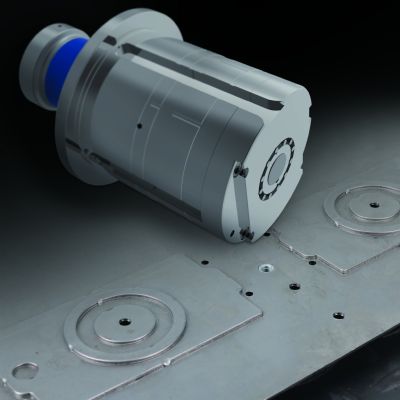 CNC Punching
CNC PunchingCNC Punching: Positive Stop a Positive Advantage
Lou Kren Monday, February 27, 2023







